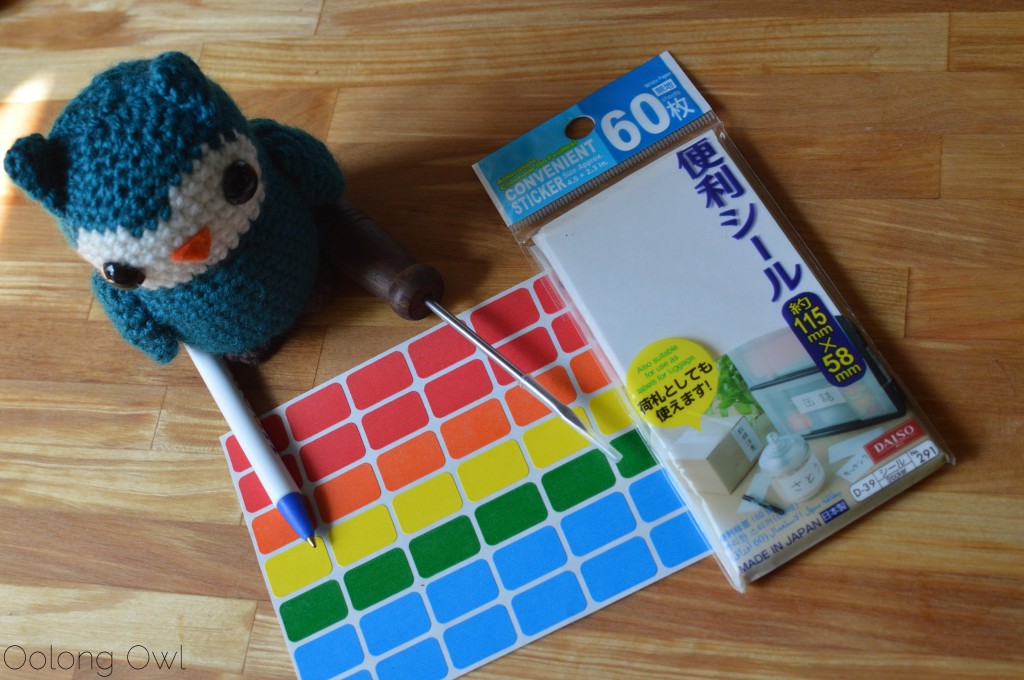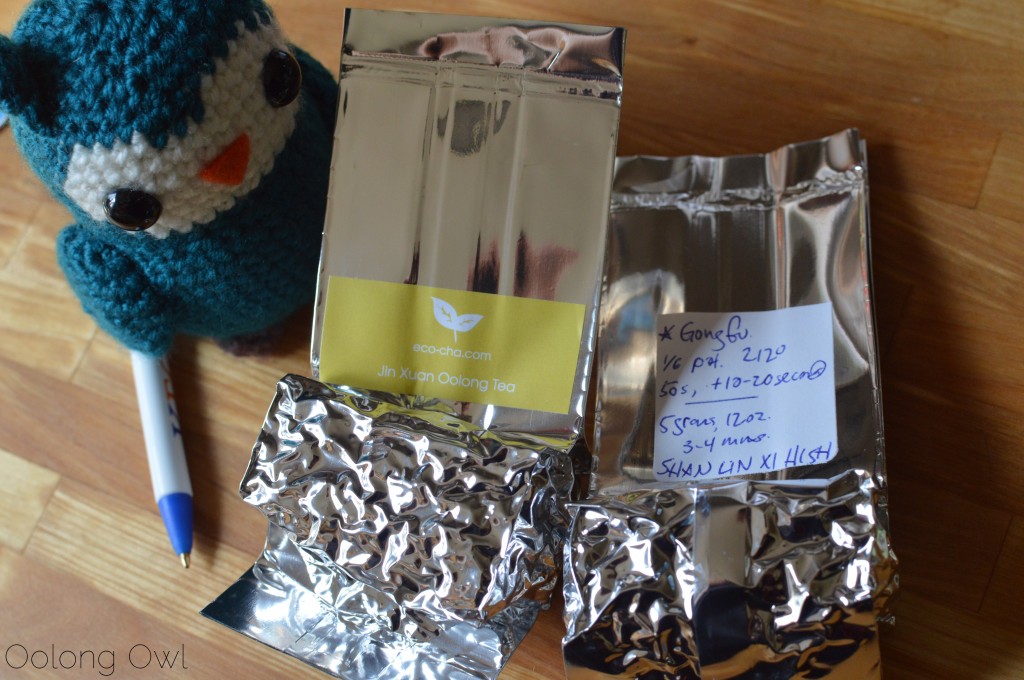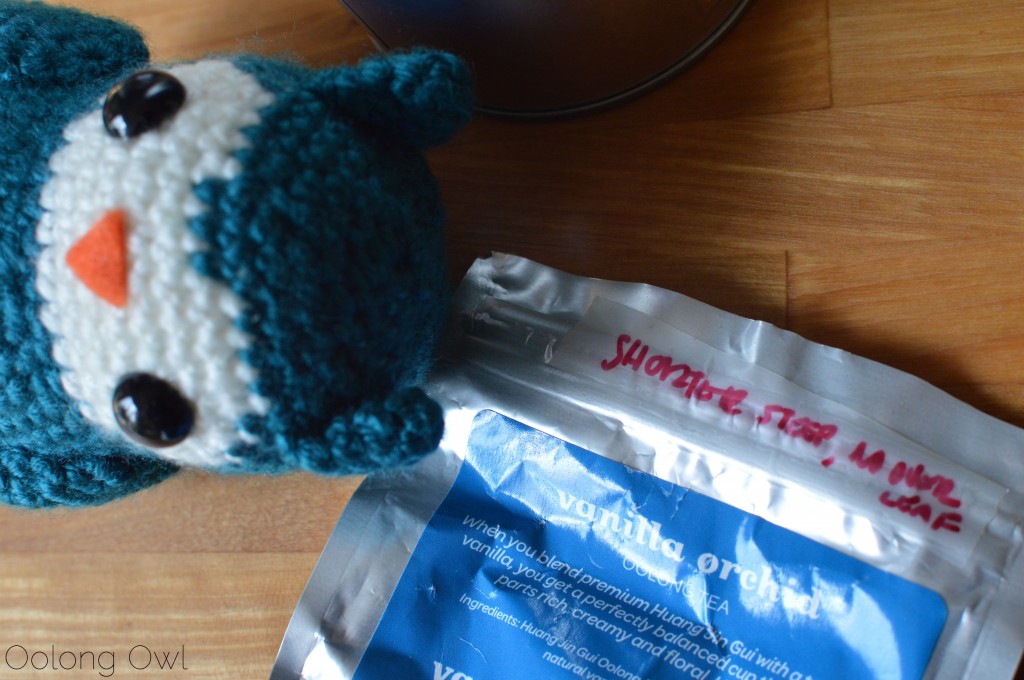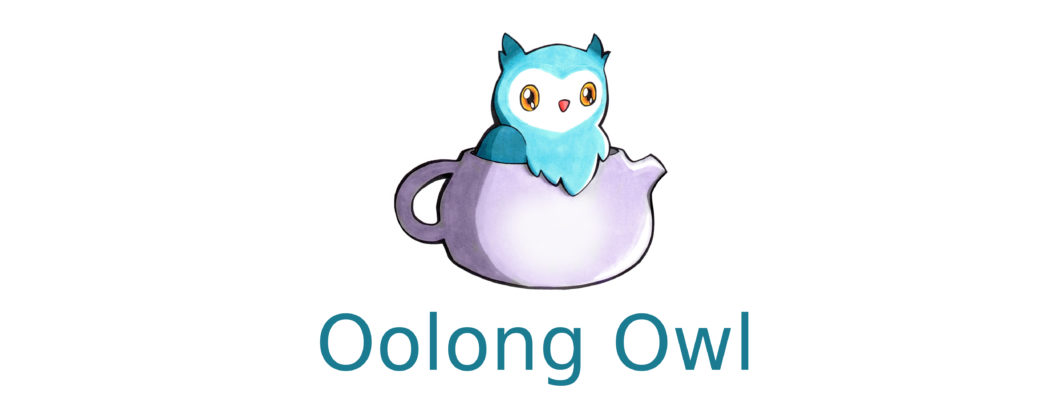There is a point a tea drinker reaches when you have so much tea stashed and you lose track of specifics for each tea in your collection. As a tea drinker with a big stash, I’ve come across tea stash organization problems like:
- Steeping a cup of tea that was fantastic, especially after experimenting with the steep times or amounts, and forgot what I did when making the next cup.
- Finding a package of tea in the back of your cupboard and have no idea how old it is.
- The tea came without steeping instructions, no ingredient list, or isn’t in your language.
This is what the Tea Owls and I do: I keep a pen and some labels with my tea stash. Ideally, you want a pen that is odorless, unless you want to risk sharpie marker scent contaminating the teas. You can also get really fancy here, like colour code your labels or pens to match DAVIDsTea‘s tea type colouring scheme.

I stick on the information I need for my tea on my tea package or tin. For example, I added steeping instructions to my Eco-Cha tea so I don’t have to check the website every time I want to make a cup. Many tea sellers list steeping instructions on their website. Sometimes, a pamphlet is enclosed with your order with steeping instructions – however I find a label on the tea package is faster so I don’t have to flip through or keep a stack of papers with my tea stash.

Some cases, I write in the tea type and ingredients list, especially for teas that have names that don’t give you a clue on what it is. An ingredient list, especially for tea blends, is handy to have near especially if you have friends or family with food allergies.

I like labels and have lots around my house, but you can use just scotch tape or just simply write on the package. For this tea, I stuck on a note to revise the steeping time listed on the package.

*** A very important tip, that I need to do myself more often, is Date the Tea. Quite often, especially with tea blends, the tea seller does not list a date the tea was packed or blended on. I Teas generally are good for a year (not counting pu’er of course!), though I’ve had well stored tea taste fine at the 2 to 3 year mark. If the tea has extras like fruit or chocolate bits, in my experience, you should drink it within a year. I’ve had a couple fruit and chocolate teas that have spoiled, turned weird colours and tasted off despite proper tea storage.
In the end, adding notes to your tea is like writing on a cookbook on what you changed or simply “good!” Heart label = I’m not sharing this tea!

pssst! Labels (along with some small bags) are also handy to keep with your tea stash. That way, you are prepared when a friend needs a tea sample and they’ll have all the information they need to know how to make the tea and what tea company it’s from!
Do you have any helpful tea organization tips? Feel free to comment and share!






